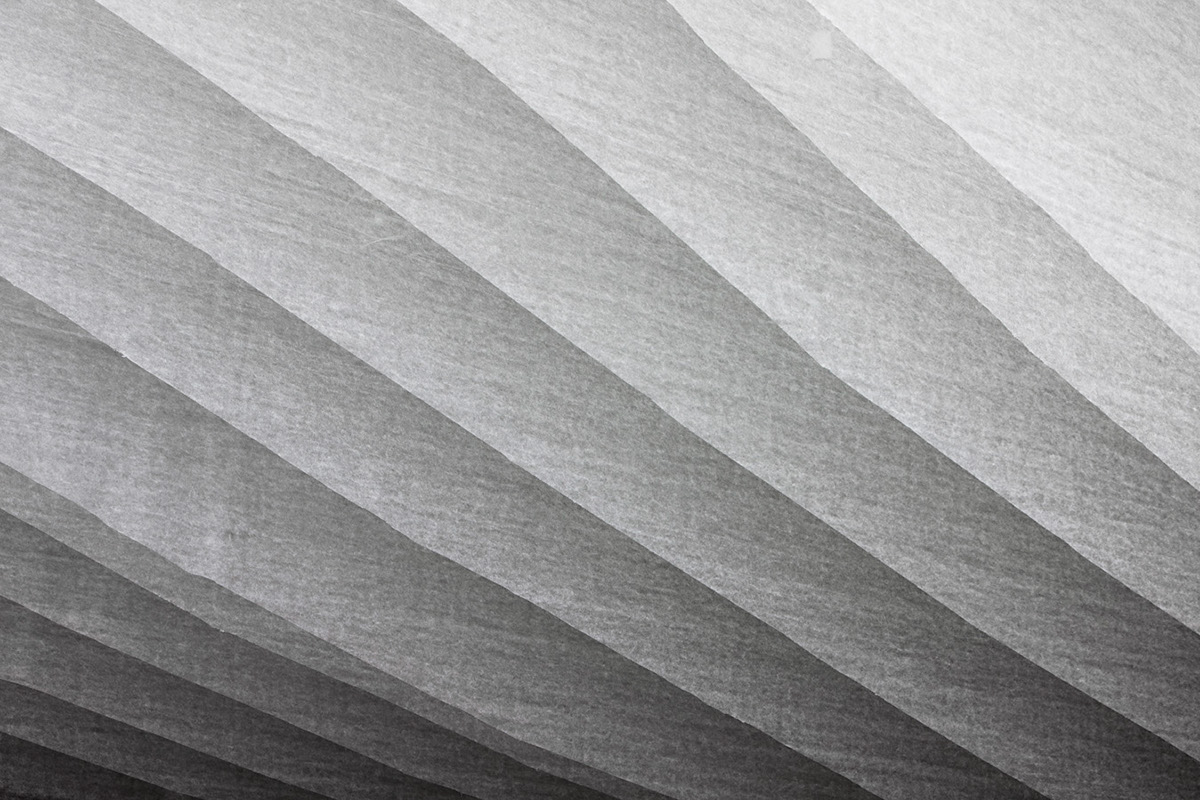
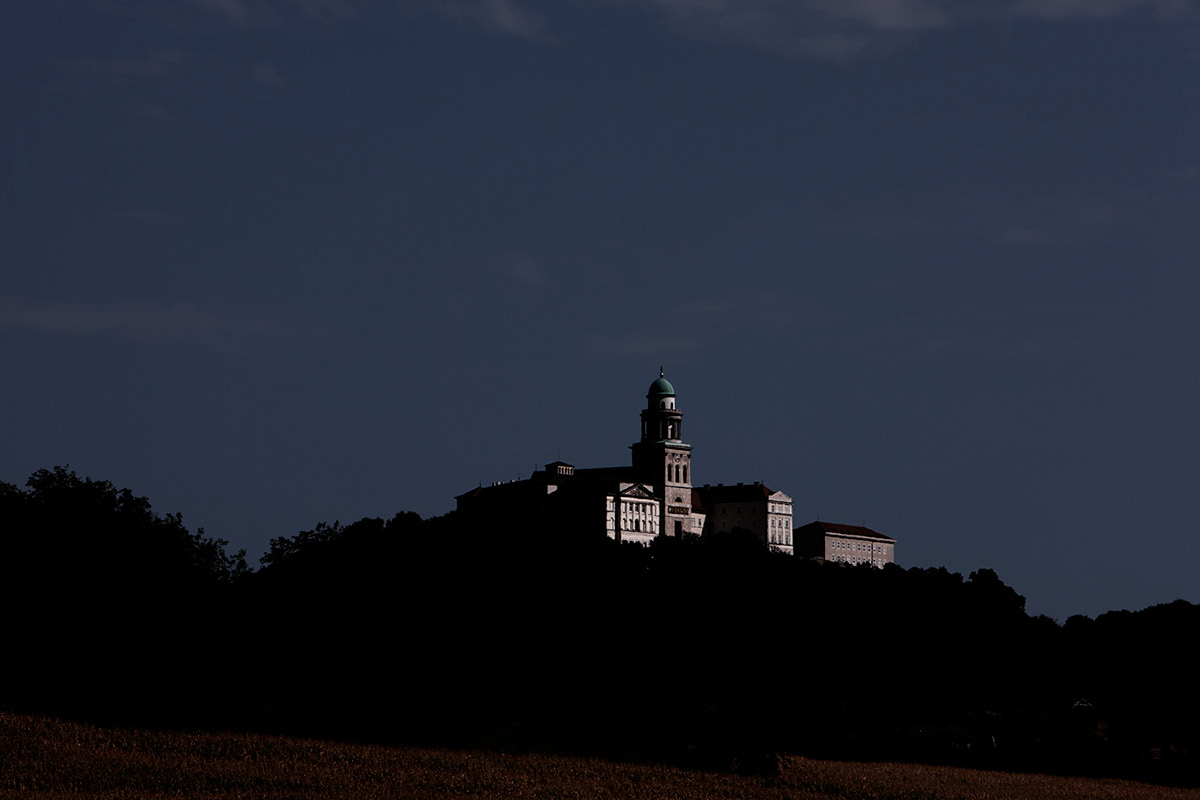
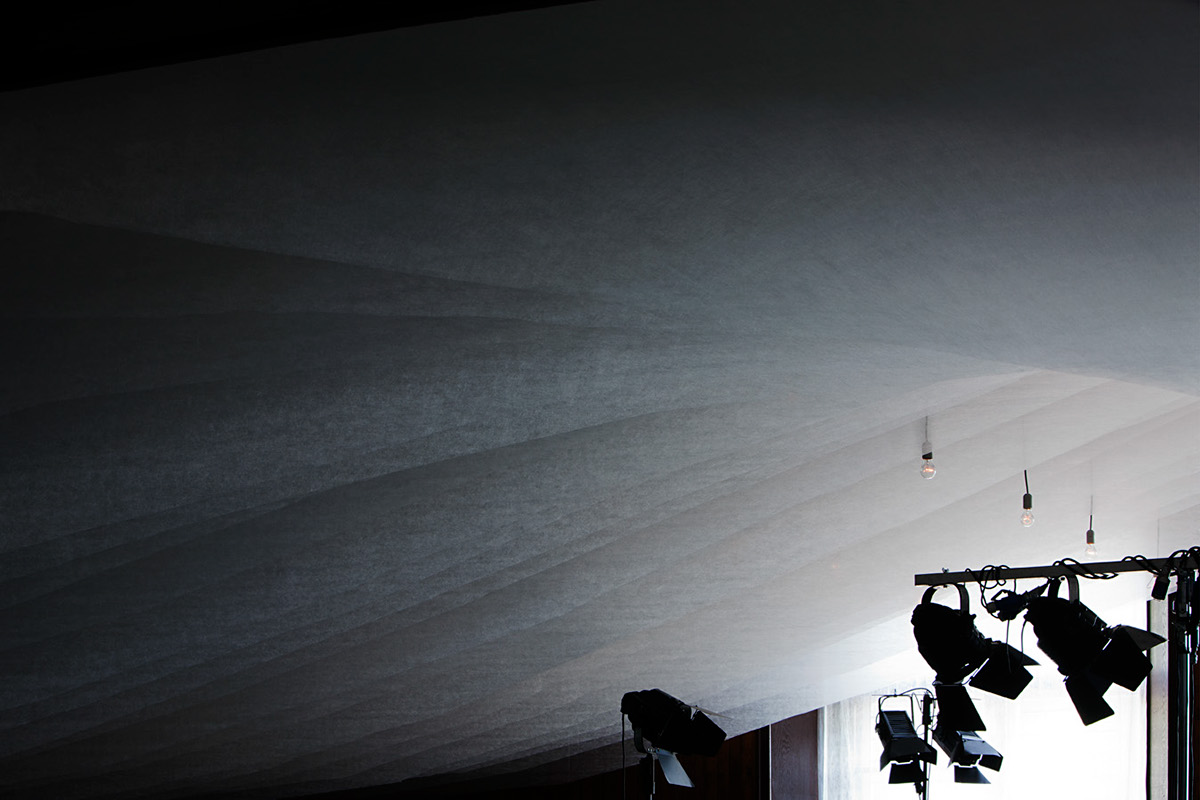
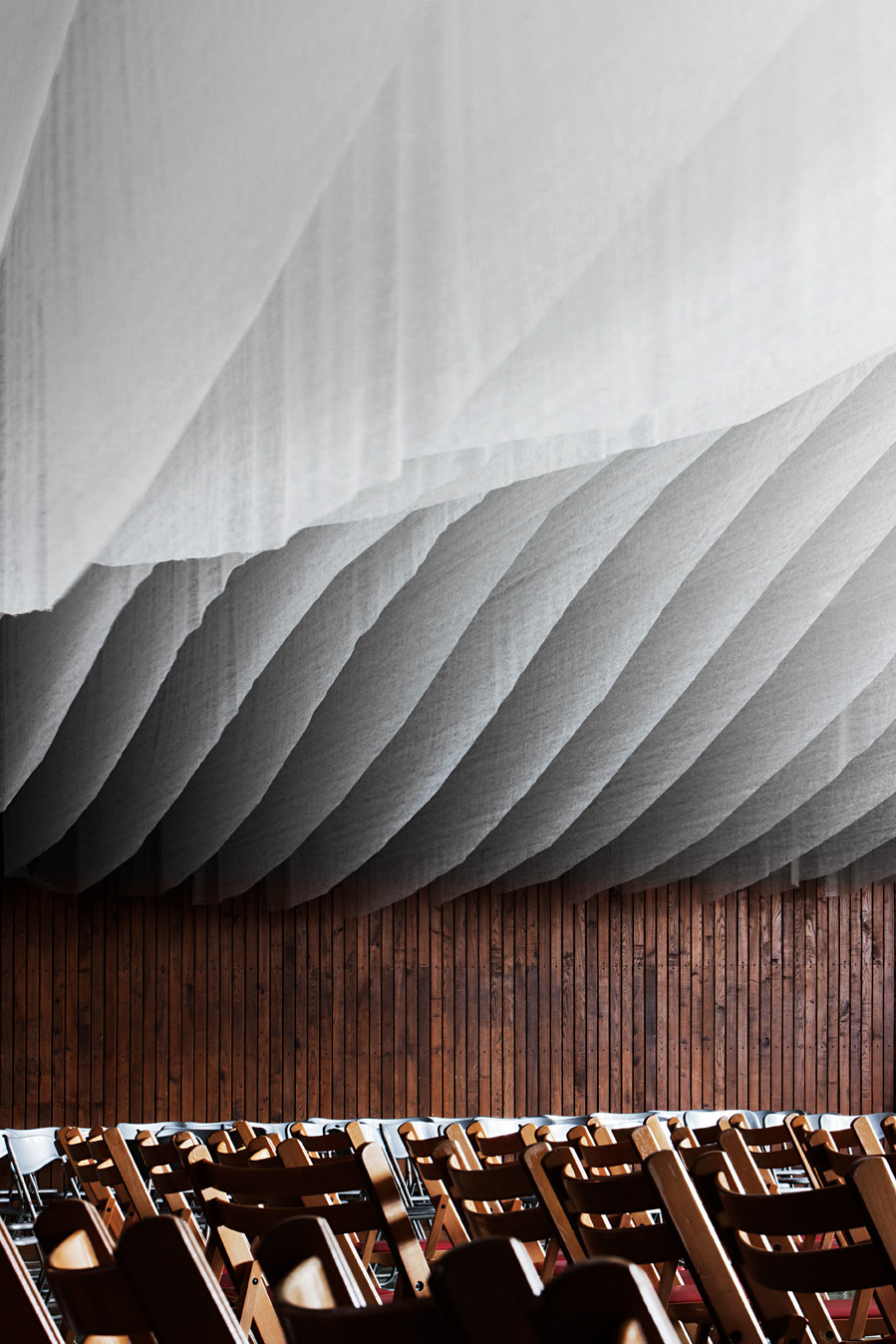
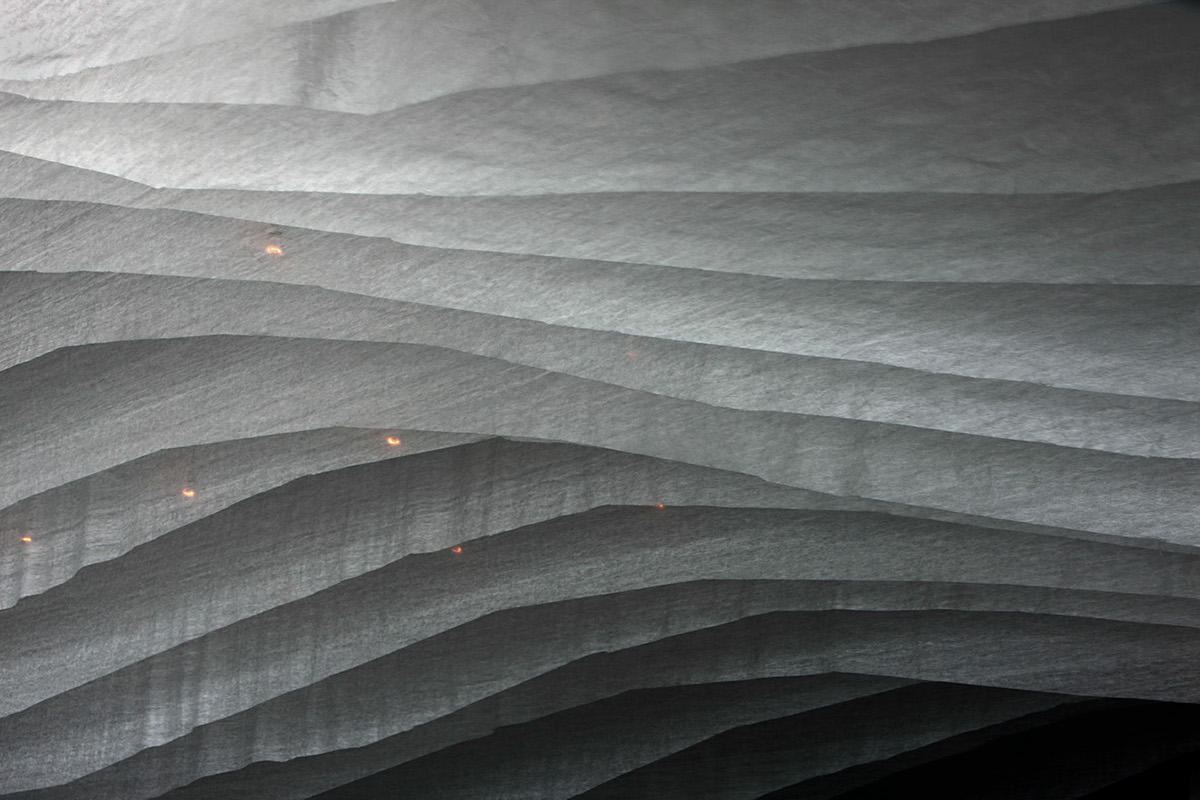
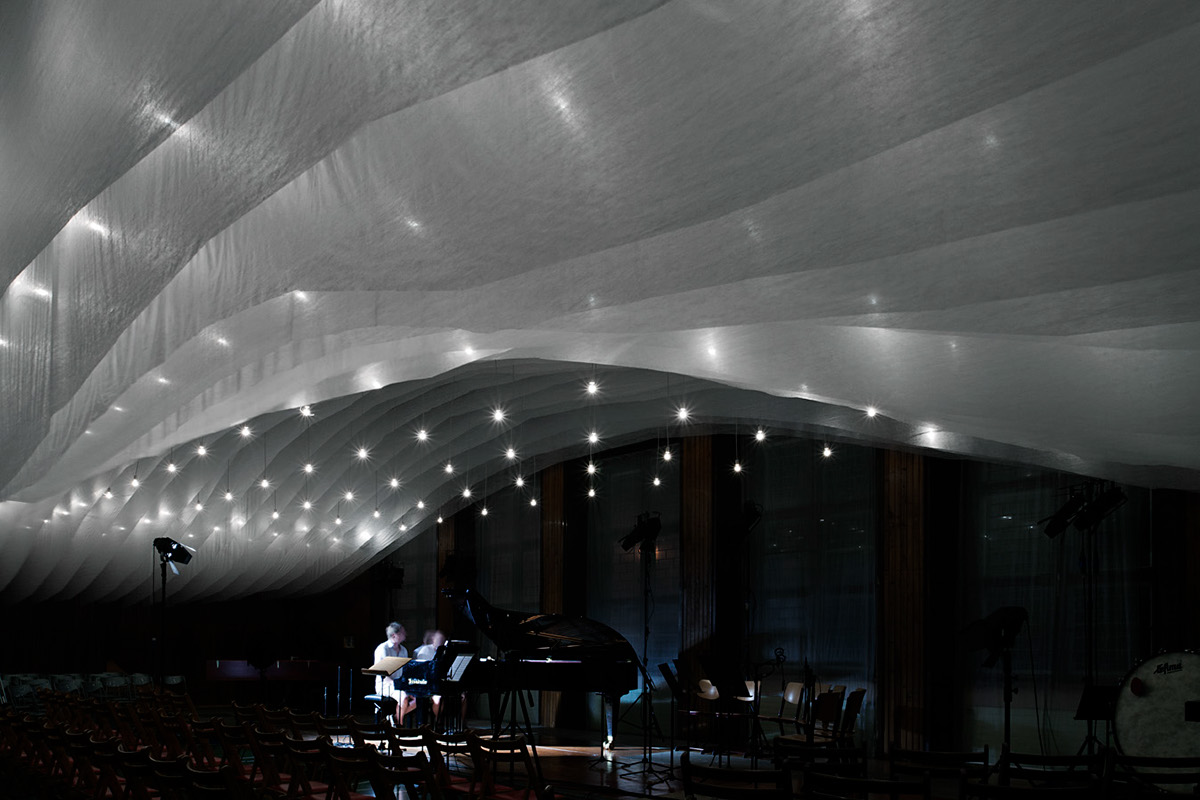

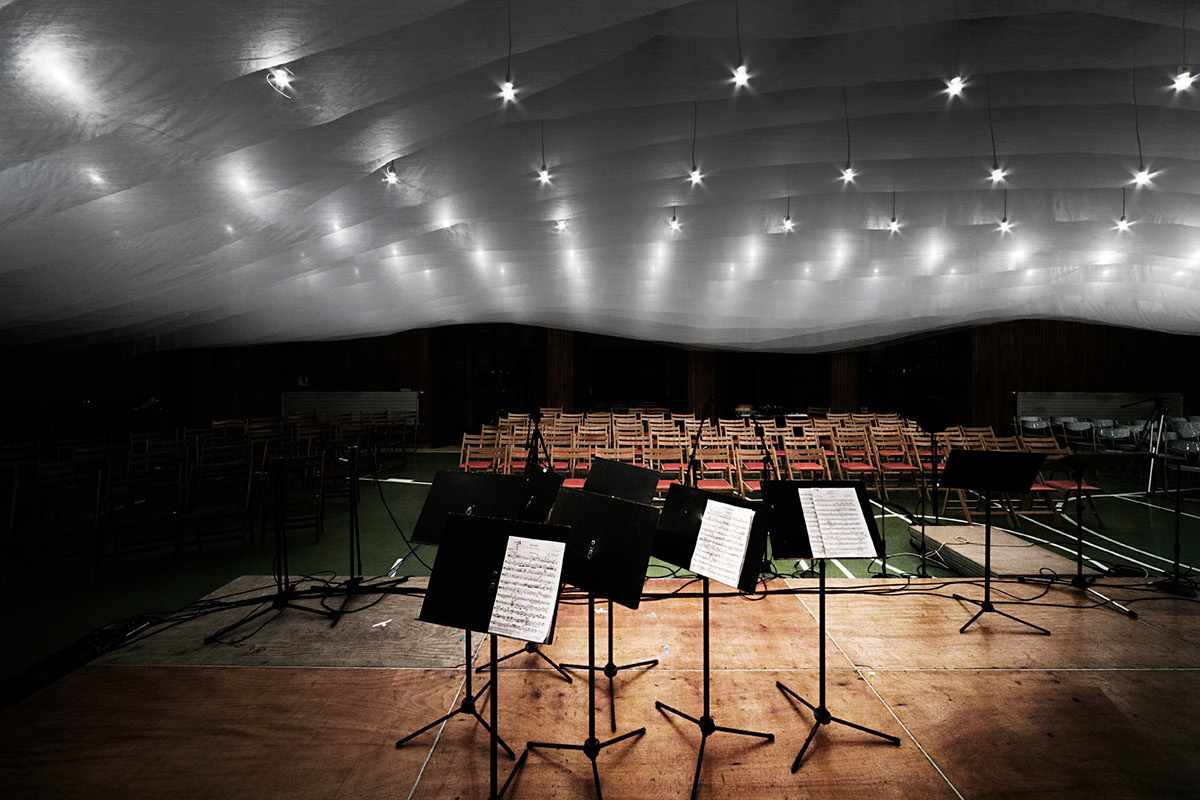
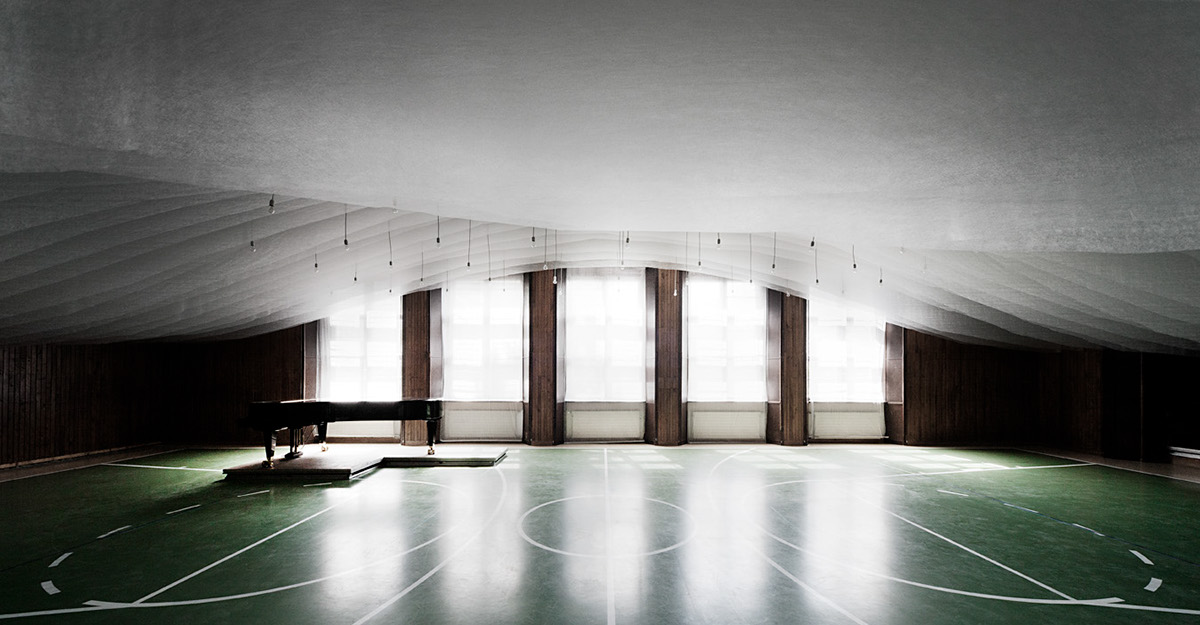
BENEDICTINE CONCERT HALL -
CONCERT HALL INSTALLATION FOR ARCUS TEMPORUM 2012
PANNONHALMA, HUNGARY
CONCERT HALL INSTALLATION FOR ARCUS TEMPORUM 2012
PANNONHALMA, HUNGARY
Design Team: Dániel Baló, Dániel Eke, Zoltán Kalászi
Construction team: Dániel Baló, Tamás Bene, Dániel Eke, Máté Gadolla, Zoltán
Kalászi, Balázs Máté, Nóra Szüts, Eszter Takács, Mar Vicens Fuster, Dániel Töös
Photographs: Tamás Bujnovszky
Construction team: Dániel Baló, Tamás Bene, Dániel Eke, Máté Gadolla, Zoltán
Kalászi, Balázs Máté, Nóra Szüts, Eszter Takács, Mar Vicens Fuster, Dániel Töös
Photographs: Tamás Bujnovszky
“...a spatial structure composed from two elements: an interacting system
of a translucent media and a geometric grid of point lights. The relationship
between them defines the location, light condition and atmosphere of
the two main functions of a concert hall: the auditorium and the stage.”
of a translucent media and a geometric grid of point lights. The relationship
between them defines the location, light condition and atmosphere of
the two main functions of a concert hall: the auditorium and the stage.”
Conceived for the classical concerts of the Arcus Temporum Festival of
Pannonhalma, the installation was designed specifically for the gym
of the abbey’s boarding school and built by a group of friends during a
week-long workshop. Using a mere two elements, the artwork’s clear but
complex structure still engulfed the spacious dimensions of the gym.
The light bulbs’ strict geometrical grid and the parallel waving layers of the
translucent textile were dropped from the ceiling into the space below. In order
to create an interior suitable for classical concerts, we firstly had to somehow
fade out the gym’s characteristic appearance and find a suitable cover. But
further on, we were eager to form such an atmosphere that frames musical
events and partition the homogenous space through gentle transitions.
Therefore we created a spatial structure built from two items: an interacting
system of a diffuse, translucent media and a geometric grid of point lights.
The diffuse element’s hanging layers are made from a non-woven geotextile
fabric, a cheap material commonly used in building industry and agriculture.
With the fabric domineering over the beams and walls, the room’s boarders
are blurred by the different outlines and translucent, opalescent texture of
the fabric’s layers. They also serve to define the location, light condition and
atmosphere of the two main functions: the auditorium and the stage. The
point lights are hung at nodes of a regular grid, illuminating at equal intensity.
Above the auditorium these bulbs are hidden among the waving textile layers,
generating a constant diffuse light, while above the stage they come into
view, bringing the musicians into focus.
With the use of the textile layers we succeeded in improving the room’s
acoustics: the hanging ribs dampened the sharp reflecting sounds and
dispersed them through the space, generating a more comfortable acoustic
atmosphere and musical experience.




